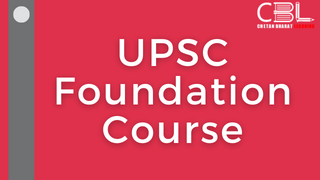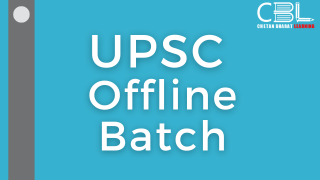
Important for UPSC, State PCS
Prelims: Direct Benefit Transfer Scheme, Pradhan Mantri Kisan Samman Nidhi (PM-Kisan), Pradhan Mantri Fasal Bima Yojana
Mains: General Studies Paper 3- Benefits of Direct Benefit Transfer Scheme, Issues Regarding Direct Benefit Transfer Scheme
Context-
- Cash transfers have long been part of social protection schemes across the globe, designed to address specific challenges like poverty, health access, and education.
- India’s National Social Assistance Programme (NSAP), one of the oldest cash transfer initiatives, exemplifies this by providing pensions to vulnerable populations such as the elderly, widowed, and disabled.
- However, recent trends reveal that cash transfers have evolved from targeted safety nets to political tools used as a panacea for a wide array of social and economic challenges.
- While they have gained popularity among political parties, their efficacy in addressing underlying issues remains questionable.
The Rise of Cash Transfers in Indian Politics
- In recent years, cash transfer schemes have become a favoured strategy for political parties to secure electoral success.
- For instance, incumbent governments in Maharashtra and Jharkhand successfully utilised cash transfer schemes targeted at women voters, contributing significantly to their re-election.
- Similarly, states like Telangana and Odisha adopted cash transfers to address agrarian distress, a model later expanded by the central government through the PM-KISAN scheme in 2019.
- These schemes have since been extended to tackle unemployment, with several states implementing or promising direct financial assistance for the unemployed.
- The appeal of cash transfers lies in their simplicity and immediacy.
- With the expansion of financial inclusion, these schemes are easy to implement and provide direct, tangible benefits to voters, bypassing bureaucratic inefficiencies and middlemen.
- Additionally, their fungible and unconditional nature makes them highly attractive to beneficiaries.
- For politicians, they offer a direct connection with the electorate, enhancing their popularity and electoral prospects.
Arguments Against the Cash Transfer Policy: The Problematic Assumptions
- Cash Transfers Solve Root Problems
- A prevalent belief is that direct financial assistance can effectively resolve issues like poverty, unemployment, and agrarian distress.
- However, this assumption overlooks the multi-dimensional nature of these problems.
- Poverty, for instance, is influenced by factors such as lack of education, inadequate healthcare, and limited access to infrastructure.
- Similarly, agrarian distress arises from systemic challenges, including outdated farming techniques, volatile markets, and inadequate policy support.
- Cash transfers provide temporary relief but fail to address the structural issues underlying these crises.
- Universality Equals Effectiveness
- Another flawed assumption is that cash transfers, being fungible and universal, inherently meet the diverse needs of beneficiaries.
- While their unconditional nature provides flexibility, it also limits their capacity to address specific issues effectively. For example, a farmer receiving cash under an agrarian distress scheme might use it for immediate household expenses rather than investing in agricultural inputs or modern equipment.
- Similarly, unemployed youth might use funds for consumption rather than skill development or entrepreneurship.
- The universal application of cash transfers disregards the varied and nuanced needs of different demographic groups.
- Cash Transfers Bypass Bureaucratic Inefficiencies
- While cash transfers do circumvent some layers of bureaucracy and reduce the role of intermediaries, they are not immune to implementation challenges.
- Issues such as exclusion errors, where eligible beneficiaries are left out, and inclusion errors, where ineligible individuals receive benefits, are common.
- These errors undermine the fairness and effectiveness of such schemes.
- Additionally, the dependence on robust financial infrastructure and digital literacy excludes marginalised populations, particularly in rural areas where access to banking services remains limited.
- Political Success Equals Policy Success
- Perhaps the most problematic assumption is the conflation of political and policy success.
- The electoral gains achieved through cash transfers are often seen as evidence of their effectiveness.
- However, this ignores the broader metrics of success, such as improvements in human development indicators, economic growth, or social equity.
- Political parties focus on the immediate popularity boost from cash transfers without evaluating their long-term impact or sustainability.
Key Schemes Under DBT
- Direct Benefit Transfer (DBT) Program is a flagship initiative with the objective to transfer subsidies and financial benefits directly into the bank accounts of beneficiaries, thereby reducing leakages and ensuring transparency.
- It covers various schemes like scholarships, subsidies, wages, pensions, and cash in lieu of food grains.
- Public Financial Management System (PFMS): It is a financial management platform that supports the implementation of DBT.
- It integrates with core banking solutions and state treasuries to track fund flow and ensure effective monitoring and accountability.
- PAHAL (Pratyaksh Hanstantrit Labh): It is one of the largest DBT schemes, targeting over 29 crore beneficiaries. It aims to eliminate ghost beneficiaries and ensure that subsidies reach the intended recipients.
- Pradhan Mantri Kisan Samman Nidhi 2019 (PM-KISAN): It provides income support to farmers, with ₹6,000 per year transferred in three equal installments to the bank accounts of eligible farmers.
- Pradhan Mantri Jan Dhan Yojana (PMJDY): Aimed at financial inclusion, this scheme ensures that every household has access to banking facilities, enabling direct transfers.
- National Social Assistance Programme (NSAP): It provides pensions to the elderly, widows, and disabled individuals who are unable to participate in economic activities.
- It includes schemes like Indira Gandhi National Old Age Pension Scheme (IGNOAPS), National Widow Pension Scheme (IGNWPS), and National Disability Pension Scheme (IGNDPS).
- Mahatma Gandhi National Rural Employment Guarantee Act (MGNREGA) and Pradhan Mantri Matru Vandana Yojana (PMMVY) have provisions related to cash incentives to beneficiaries..
- Conditional Cash Transfer (CCT) Schemes: These provide cash to poor households on the condition that they fulfill specific criteria, such as ensuring children’s school attendance or participating in health check-ups.
- These schemes aim to incentivize positive behaviors that contribute to human capital development.
State-Level Initiatives
- Maharashtra’s ‘Mukhyamantri Majhi Ladki Bahin Yojana’ provides ₹1,500 per month to eligible women, while Jharkhand’s ‘Mukhyamantri Maiya Samman Yojana’ offers ₹1,000 per month.
- These schemes are part of a broader trend where states are increasingly using cash transfers as a tool for political mobilization and welfare.
- States like Telangana and Odisha adopted cash transfers to address agrarian distress, a model later expanded by the central government through the PM-KISAN scheme in 2019.
Way Forward: Rethinking the Assumptions
- The problematic assumptions underpinning the over-reliance on cash transfers highlight the need for a paradigm shift in policy design.
- Cash transfers should be viewed as one component of a broader strategy, complementing investments in infrastructure, education, healthcare, and social services.
- Policymakers must recognise that sustainable solutions require time, effort, and collaboration across stakeholders.
- Without addressing these flawed assumptions, cash transfers risk becoming a superficial fix rather than a transformative tool for development.
Conclusion
- While cash transfers have their merits, their overuse as a political tool risks undermining the very objectives they aim to achieve.
- The need of the hour is a more balanced understanding of the role of cash transfers in social welfare.
- Rather than being viewed as quick-fix solutions, they should be integrated into broader strategies aimed at strengthening social safety nets and addressing systemic issues.
- This requires prioritising investments in critical sectors and designing interventions that go beyond electoral gains to achieve sustainable development outcomes.
CBL Practice Questions for Prelims –
Question 1: Consider the following statements regarding Cash Transfer Programs:
- Cash transfers provide immediate financial relief and empowerment to vulnerable sections of society by allowing them to decide how to spend the money.
- Cash transfer schemes usually have a higher risk of creating dependency among recipients, thereby reducing their incentives to seek employment.
- Cash transfers are considered a sustainable long-term solution to poverty and inequality without the need for any complementary structural reforms.
Which of the above statements is/are correct?
(a) 1 and 2 only
(b) 1 and 3 only
(c) 2 and 3 only
(d) 1 only
Answer: (a) 1 and 2 only
CBL Mains Practice Question –
“Cash transfer programs have gained popularity as a tool for poverty alleviation. Discuss the advantages and challenges associated with conditional and unconditional cash transfers in the Indian context.”




Leave a Reply
You must be logged in to post a comment.